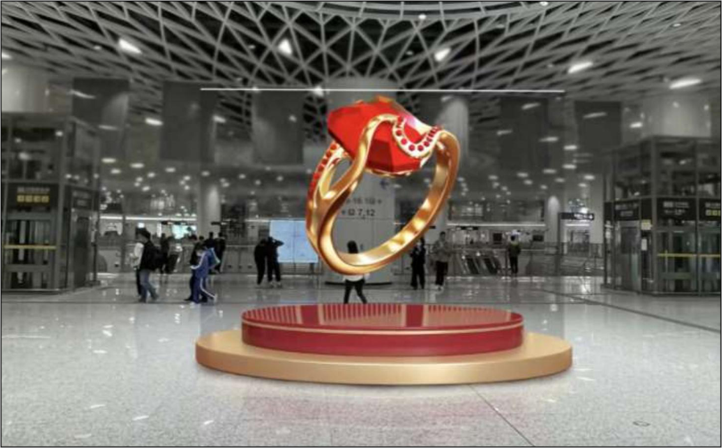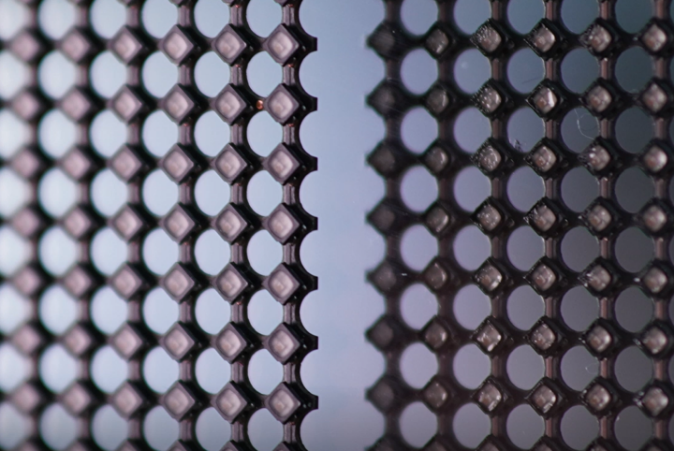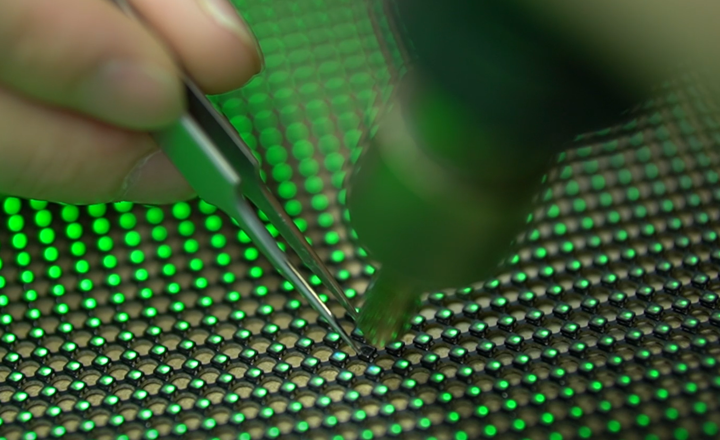A Transparent LED That Finally Makes Sense
I’ve seen and worked with enough “transparent LED” products over the years to know most of them are barely LED. Plastic sheets, wide pixel pitches, reflections everywhere, and if a single pixel dies, the whole sheet becomes a consumable. I keep my expectations low.
Houdini genuinely breaks that pattern.

The hardware shows it immediately: a compact control box feeding signal and power into long fiberglass mesh strips. No acrylic. No glossy surface. Just a flexible PCB grid with surface-mounted SMD pixels, each with its own driver. That alone eliminates the scanning artifacts and streaking which other traditional LED systems wrestle with.
Even before powering it on, the transparency is obvious. Actual see-through. The mesh is basically air.
When its powered up, the image doesn’t sit on the surface, it simply appears. With no reflective substrate getting involved, the background stays visible without competing with the content.
Houdini pushes past the usual weak spots:
1. Daylight: 5000 nits. Doesn’t wash out.
2. Cameras: Clean. No scan lines, no artifacts.
3. Suspension: It can hang freely with nothing behind it. Plastic-sheet systems can’t pull that off.
4. Serviceability: Dead pixel? Swap it. Not the whole panel.
5. Install fit: Trim the mesh to size. No rigid limitations.

The pitch options, 2.5 mm to 6 mm, are unusually tight for this category. It works up close and at a distance, which is not something I can say for most “transparent” solutions.
Houdini is the first transparent LED I’ve worked with that invites creativity instead of forcing compromises. It’s clean, bright, serviceable, and genuinely transparent. That alone puts it in a different class.

If you work in retail, architecture, or any environment where a display should enhance the space instead of occupying it, this is the first product I’ve seen that truly earns the term “transparent LED.”